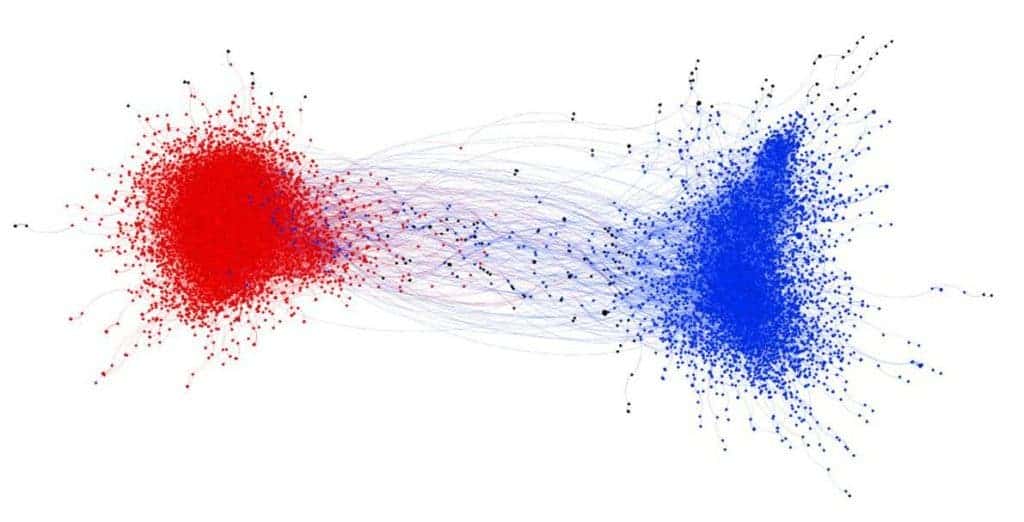For a long time already, social media has been an important platform for spreading information. A new study from Pew Research claims that 62 percent of people get their news from social media, with 18 percent doing so very often. Twitter and Facebook are often cited as leading factors playing roles in important sociocultural turn of events from the Arab Spring to the US presidential election. Psychologists at New York University learned that “moral-emotional language in political messages substantially increases their diffusion” but also that these retweets largely came from same-minded people. The graph below speaks 1,000 words about how ideological thinking can get trapped in the same bubble.

Preaching to the choir
The researchers scraped 563,312 tweets about three controversial topics: Gun control, same-sex marriage, and climate change. Each tweet was sorted into three distinct categories based on the type of message: moral language (words like ‘duty’), emotional language (words like ‘fear’), or language both moral and emotion (words like ‘hate’).
Moral-emotional content was the most successful kind of language on twitter, with each additional word increasing their diffusion by a factor of 20%. Psychologists use the term “moral contagion” to describe the process of expression of moral-emotional language over social media.
According to Quartz, the NYU researchers employed an algorithm that measured “political persuasion based on follower networks”. This helped the team establish the ideological pole of each twitter user. As far as messages about gun control or climate change are concerned, these were far more likely to get retweeted in the same ideological group and quite unlike to reach out-group users. Content about same-sex marriage tended in the same direction but didn’t prove statistically significant.
“Furthermore, we found that moral contagion was bounded by group membership; moral-emotional language increased diffusion more strongly within liberal and conservative networks, and less between them. Our results highlight the importance of emotion in the social transmission of moral ideas and also demonstrate the utility of social network methods for studying morality,” the authors wrote in the Proceedings of the National Academy of Sciences.



